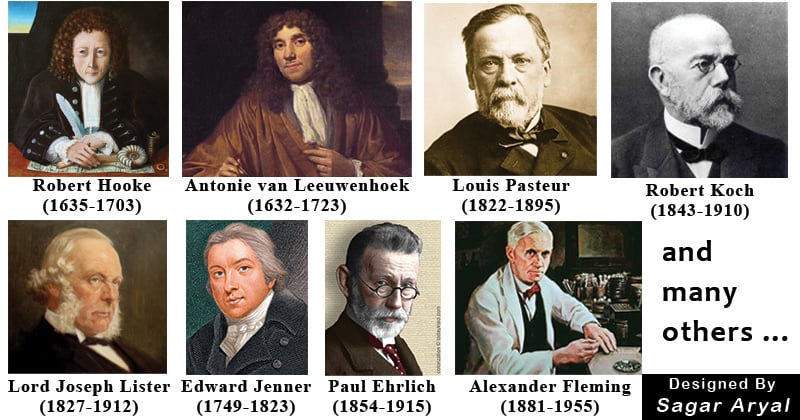Which of the Following Scientists First Challenged Spontaneous Generation
In a subsequent lecture in 1864 Pasteur articulated Omne vivum ex vivo. What is a radioactive isotope.

Spontaneous Generation Microbiology
Spallanzani tried to disprove spontaneous generation by performing boiled broth experiments.

. Also the archaic theory that utilized this process to explain the origin of life. He subsequently proposed that life only comes from life. The culminating debates over spontaneous generation began in 1858 when Félix-Archiméde Pouchet presented a paper to the Académie des Sciences Frances highest scientific body in which he claimed to have produced spontaneous generation under carefully controlled conditions that allowed no chance of outside contamination.
Today spontaneous generation is generally accepted to have been decisively dispelled during the 19 th century by the experiments of Louis Pasteur. February 18 1626-March 1 1697. Spontaneous generation the hypothetical process by which living organisms develop from nonliving matter.
Louis Pasteur is credited with conclusively disproving the theory of spontaneous generation with his famous swan-neck flask experiment. Aristotle Jan Baptista van Helmont John Needham Louis Pasteur who from the following experiments with raw meat larvae and flies in an attempt to refute the theory of. While both supported the idea of spontaneous generation Italian abbot and physiologist Lazzaro Spallanzani maintained that life could never spontaneously generate from dead matter.
In England John Needham challenged Redis findings by conducting an experiment in which he placed a broth or gravy into a bottle heated the bottle to kill anything inside then sealed it. In others he boiled broth sealed the flasks then cracked the seals. Pasteur John Needham Lazzaro Spallanzani which of the following individuals is credited for definitively refuting the theory of spontaneous generation using broth on the swan neck.
How did experiments by each of the following scientists contribute to the disproval of spontaneous generation. -took another 200 years. He subsequently proposed that life only comes from life.
Pasteurs set of experiments irrefutably disproved the theory of spontaneous generation and earned him the prestigious Alhumbert Prize from the Paris Academy of Sciences in 1862. Francesco Redi 1668 disproved spontaneous generation by finding that worms on rotting meat came from eggs laid by flies not decaying meat covered meat with gauze no flies. After this experiment people were willing to acknowledge that larger organisms didnt arise by spontaneous generation but had to.
Following the abandonment of Aristotelian doctrines and the begin-ning of modern science in what became called the scientific revolution the idea of spontaneous generation too became increasingly challenged and disputed. Maggots arose only where flies were able to lay eggs. According to Figure 14-4 approximately how old do some scientists estimate the Earth to be and how do they believe it formed.
Prominent scientists designed experiments and argued both in support of John Needham and against Lazzaro Spallanzani spontaneous generation. As a result Redii disproved the idea of spontaneous generation. What type of molecule would she look for to do this.
The idea that organisms originate directly from nonliving matter. Conflicting results between labs. In some experiments he boiled broth and sealed the flasks.
He conducted one of the first examples of a modern experiment using controls. Louis Pasteur - One of the first to disprove spontaneous generation. Century supported spontaneous generation Fry 2000 18-19.
A French scientist who proved that micro organisms was carried by dust not air. The scientist wants to run a sample analysis to determine which tube contains thermion sample and which one contains the viroid. In 1859 the year English naturalist Charles Darwin published his On the Origin of Species Pasteur decided to settle this dispute.
This experiment disproved the idea of spontaneous generation for larger organisms. Or so he thought. A scientist has two samples- the first is a prion sample while the second is a varied sample.
Marcus Antonius Von Plenzic later backed Richard Bradleys hypothesis that diseases were caused by microbes. According to that theory pieces of cheese and bread wrapped in rags and left in a dark corner for example were thus thought to produce mice because after several weeks there were mice in. Louis Pasteur is credited with conclusively disproving the theory of spontaneous generation with his famous swan-neck flask experiment.
He expanded upon the investigations of predecessors such as Francesco Redi who in the 17 th century had performed experiments based on the same principles. Up to 24 cash back believe in the concept of spontaneous generation. French 1864 Spontaneous Generation.
Louis Pasteur is credited with conclusively disproving the theory of spontaneous generation with his famous swan-neck flask experiment. Up to 24 cash back Francisco Redi. However the samples are in unlabeled tubes.
Prominent scientists designed experiments and argued both in support of John Needham and against Lazzaro Spallanzani spontaneous generation. Prominent scientists designed experiments and argued both in support of John Needham and against Lazzaro Spallanzani spontaneous generation. The germ theory of disease was also reinforced by Anton Van Leeuwenhoek the first microbiologist to view microorganisms under a microscope.
Redi successfully demonstrated that the maggots came from fly eggs and thereby helped to disprove spontaneous generation. The first major blow against it was brought about by the. He subsequently proposed that life only comes from life.
Francesco Redi was an Italian Physician and Poet who assisted in paving the way to disproving the theory of spontaneous generation through various experiments in the 17th century.

Spontaneous Generation Microbiology


No comments for "Which of the Following Scientists First Challenged Spontaneous Generation"
Post a Comment